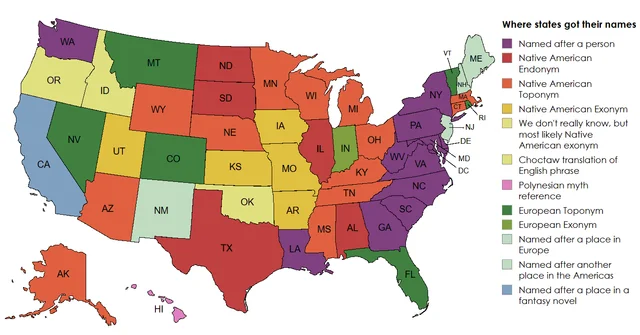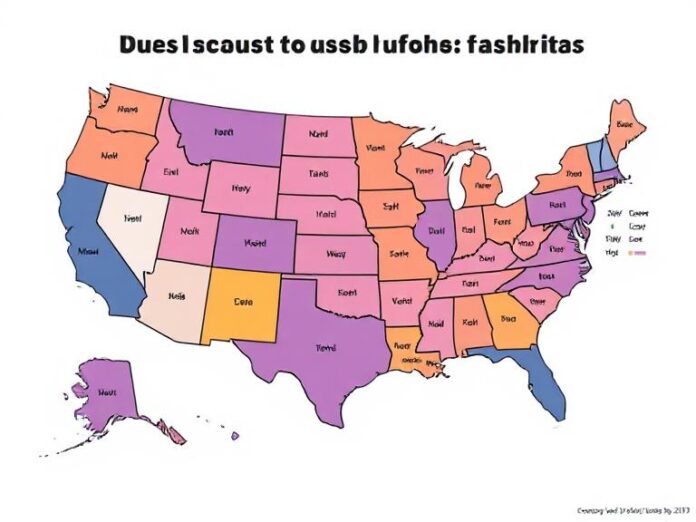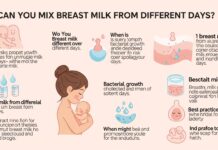US States Most Blind: Exploring the Hidden Crisis of Vision Loss in America
When referencing public health in the US, most people think of heart disease, obesity, or mental health. Rarely do we consider the profoundly deep topic of vision loss. Yet, blindness is an increasingly prevalent issue in America and a problem that millions of people struggle with every day. Understanding the US states’ most blind can reveal important information about health care inequalities, aging population issues, economic productivity, and so forth.
Surprisingly, blindness is not only an issue that affects old people or individuals who are born with some genetic problems. Currently, millions of American citizens are gradually losing their eyesight due to inadequate access to proper healthcare, chronic diseases such as diabetes, and preventable visual diseases. Some states are performing remarkably well in terms of resolving this issue, while others appear to be silently suffering from a crisis.
Read more about: Can Prolia Cause Cancer: Prolia side effects cancer
What Does It Mean to Be Blind in the United States?
Before identifying the areas where blindness is most prominent, we need to explain what we mean. The language of being “blind” often gets taken out of proportion. Blindness doesn’t always mean complete darkness. Many people deemed blind have some degree of vision remaining. There is also a broader category of vision impairment that encompasses people who struggle to see even with contacts or glasses.
Vision disability poses dramatic hindrances to one’s quality of life. It can make reading or driving difficult and lead to a heightened chance of accidents, social isolation, and a multitude of other issues. The toll it takes on the emotions can be just as severe, if not worse, than the physical toll, especially when seniors lose their vision, leading to depression or cognitive decline.
States with the Highest Blindness Rates

Researchers have recorded patterns of high prevalence of blindness in several states, mostly located in the South and Midwest. These include Mississippi, Alabama, Kentucky, West Virginia, Arkansas, and Louisiana, all of which have a larger population of people who are either completely or partially blind.
A few highlights can explain why this issue occurs. These states do not have good access to eye care professionals, particularly in rural areas. Furthermore, the region is known for having elevated chronic illness rates, like diabetes and hypertension, both of which contribute to the deterioration of vision. Moreover, these individuals are economically disadvantaged. Added to this, the absence of health insurance prevents many individuals from seeking timely care for glaucoma or cataracts.
Socioeconomic Diversity We Can’t Ignore.
Remember how we discussed socioeconomic status as it relates to an individual being blind? Poverty-stricken states tend to show elevated vision losses among adults. Routine medical checkups, such as eye exams, are often skipped by individuals due to financial constraints, which hampers their occurrence at the right time and results in early detection and intervention.
As a result, this unfortunate reality becomes normalized for a significant portion of the population living in socioeconomically active yet medically stagnant communities, primarily located in southern states. Stunningly, some counties require their residents to drive for hours just to be able to consult an ophthalmologist or optometrist. Such an astounding distance is not simply an inconvenience. Rather, it hampers people from accessing much-needed healthcare.
Workers in physically demanding occupations are more likely to suffer from work-site eye injuries, particularly in the absence of proper eye safety gear. This adds to 해결해야 할 문제 in some industrial areas. Aging Populations And Macular Degeneration In Arizona And Florida.
A greater population of retirees resides in Arizona and Florida. These states also seem to experience more significant vision-related issues. However, many individuals in these communities have access to better healthcare systems that can help manage their vision problems. Age-associated macular degeneration is a common cause of blindness in elderly Americans aged 65 and above.
However, even in states with macular infrastructure, there is growing concern about dry eye syndrome, diabetic retinopathy, optic nerve atrophy, and aging eye issues, which become more prominent and prevalent outwardly with age.
Hispanics And African American Vision Problems Treatment Gaps Resulting In Disability
Some studies highlight that untreated vision problems affect Hispanic and African American populations more severely than others. Frequently, these populations reside in urban regions where clinics are in short supply or in rural areas where eye practitioners are few. In some of the most problematic states in America when it comes to vision-related disabilities, there is a considerable gap between blindness and race-based discrimination.
The native American population severely undervalues blindness. In the USA, tribal nations face tremendous gaps in healthcare in places like Oklahoma and New Mexico, which result in vision loss due to a myriad of reasons.
The Impact of Diabetes on Eye Damage
Diabetes is always considered when discussing blindness. Diabetic eye disease typically triggers eye problems among working adults in America. There is a high prevalence of diabetes in states like Texas, Georgia, and South Carolina, and so is vision impairment.
When the blood sugar levels are poorly managed, it results in the small blood vessels in the eye getting damaged, which subsequently leads to retinal swelling, hemorrhaging, and total vision loss. Many people do not know that regular eye checkups are a necessity, which can lead to damage that is irreversible.
Public Health Initiatives
Despite the alarming statistics, there are signs of hope. Some states are actively working to reduce their vision impairment rates through free screening programs, mobile clinics, and even through awareness programs related to the prevention of vision loss.
Programs like Vision USA and the Lions Club SightFirst aim to provide services to economically disadvantaged residents. Funding tends to remain a concern. The difference in state-level vision care resources is one reason for the variance in blindness rates across the U.S. The Effect of Vision Loss on Mental Health
Perhaps one of the most overlooked effects of blindness, including its different levels, is the emotional stress it brings. Those who are undergoing the decline of vision often suffer from social isolation, worrying, and sadness. This becomes rather problematic in regions where the mental healthcare offered is limited.
Being blind or visually impaired seems to increase the risk of falls and injuries, especially among older individuals. For these people, the absence of public transport tailored for the blind can lead to their becoming confined to their houses. This seclusion is likely to deepen their already troubling psychological distress.
How Technology Is Changing the Landscape
The good news is that some U.S. citizens are benefiting from low vision technology, which helps them maintain their independence for as long as possible. With handheld and desktop screen readers, braille cell phones, and even AI glasses, the assistive technology available is unprecedented. Access to these forms of technology is often income-based, however, which means the poorest citizens in the most blighted states are the most underserved.
Compounding that issue is a lack of internet access, particularly in rural areas. Many consider these remote areas to be underserved, which is problematic, as these regions lack access to essential services. The disparity is increasing as lower-income individuals wait for essential services to become available, while non-profits and start-ups offer subsidies for vision assistive technologies.
Future Forecast and Changes Needed
If the updated estimates are anywhere close to being accurate, the number of Americans with vision problems is expected to double by the year 2050. This is not only a big loss on an individual level, but it will also be a loss economically. Unfortunately, many state programs that are already struggling will be drained by the deficit in productivity, healthcare expenses, and the rising demand for caregivers.
To counteract this issue, states need to focus on fostering eye health education, increasing access to eye disease detection, and expanding coverage for eye exams in Medicaid. California and Massachusetts are perfect examples of states that are adopting public education campaigns and public insurance policies that include vision coverage.
Furthermore, there needs to be more attention given to rural America, which is at the forefront of facing a spike in vision impairment, leading to blindness, but lacks public discourse around the topic.
Real-life Issues, Real-life People
Remember that there is a human being behind every statistic, and every number has a story. For instance, think about a truck driver in Mississippi who had to stop working because he developed cataracts and didn’t treat them. Think about a grandmother in Arkansas who can no longer read stories to her grandchildren. Last but not least, think about a young boy in Kentucky whose eye was congenital but went unnoticed for years because his family could simply not afford help.
While many of these stances and issues are heartbreaking, they are easily avoidable. Poorly implemented eye screening programs, lack of vision literacy, and ineffective community outreach are to blame for the plight of thousands.
Conclusion
Thus, discussing the most blind US states refers to much more than just locational coordinates. It entails an intersection of missing nuances in healthcare, economic disparity, geriatricism, and deep-seated obstacles that prevent a clear view of the world for a multitude of people.
Blindness doesn’t emerge in isolation—it is the outcome of a collective contemporary affliction on us as a society. We have the means to mitigate the consequences, whether through public action, policy frameworks, facilitated healthcare, or even grassroots movements; however, prior to additional lives being dimmed needlessly, action is paramount.
FAQS
1. Which US state has the highest rate of blindness?
Mississippi has ranked high for a long time because of poverty, inadequate healthcare, and high rates of diabetes. There is also a lack of accessible eye care services, which further exacerbates the issue.
2. What are the main causes of blindness in the United States?
The most common causes are unmanaged diabetes, glaucoma, aging cataracts, and lack of basic eye care. Other stress factors also contribute.
3. Is blindness more common in older adults?
Yes. Age-related vision loss occurs in over 65s, making this demographic the most affected group.
4. Are certain ethnic groups more affected by vision loss?
Yes. There are numerous social determinants of health and access to eye care that impact the vision health of the African American, Hispanic, and Native American populations.
5. How can we prevent blindness in high-risk states?
Adequate public education, accessible eye exams, and improved diabetes control can treat and prevent many cases of avoidable blindness.








